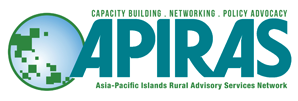Agroecology is a promising approach that is transforming agrifood systems across the Asia-Pacific Region. Indeed, there is increasing evidence of positive results with the transition to agroecology, and these include stable yields, crop resilience, higher incomes for farmers, fishers and producers, improved nutrition and food security and enhanced biodiversity (Global Alliance for the Future of Food 2023). Several events and workshops across the region over the last year (including TARASA23), have emphasised the need for agroecological approaches. However, to promote agroecology at scale, the domain needs more professionals who can understand, appreciate, adapt, and promote agroecological principles to suit varied agroecological settings, and to support farmers in designing and managing sustainable and resilient farming systems.
But are our educational institutions developing professionals who can effectively support this transition to agroecology? Currently, a gap exists in agricultural education programs – both in higher education and vocational education systems, in developing a deeper understanding of agroecological approaches. Thus the regional (AsiaPacific) working group on agroecology was established by the Food and Agriculture Organization (FAO)’s TAPAIS project¹ funded by the European Union (EU) to discuss the integration of agroecology into the agricultural education system. The working group was led by the Asia-Pacific Islands Rural Advisory Services Network (APIRAS) in close collaboration with the Asia-Pacific Association of Agricultural Research Institutions (APAARI), the Office of Innovation (OIN) and the Plant Production and Protection Division (NSP) of FAO. This Regional Brief primarily serves to present results from the productive discussions among working group members.
